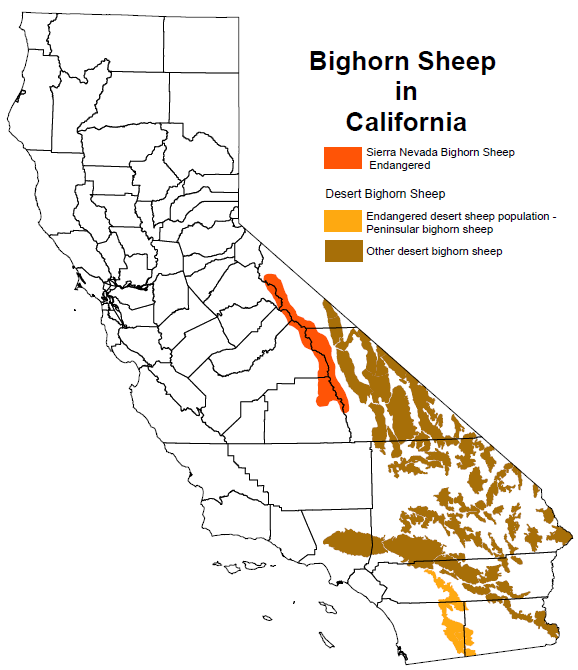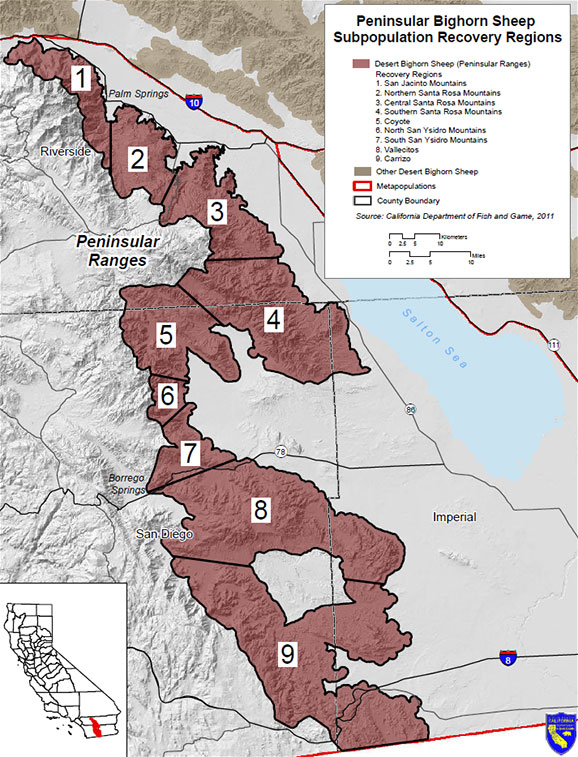Distribution
Bighorn sheep are found on the desert slopes of the Peninsular Ranges, in the western-most portion of the Sonoran Desert. These animals are part of a geographically isolated population that ranges from the San Jacinto Mountains in Riverside, south to the U.S. – Mexico international border. In the Peninsular Ranges, bighorn sheep are typically found below elevations of approximately 1,400 meters. In these mountains, bighorn sheep do not use higher elevations, possibly due to increased predation risk associated with denser vegetation at higher elevations. At lower elevations, they do not venture far from mountainous habitat. These behaviors have resulted in bighorn sheep being limited to a narrow band of habitat, sometimes only 2-3 km wide, which extends north to south along the low desert slopes. This population consists of a minimum of 8 subpopulations or “ewe groups”, which are connected primarily by the movement of males and occasionally by movement of females. This distribution could change over time, as ewe groups split, merge, or as new groups are formed.
Maps
 All Bighorn Sheep Species in California. (click/tap to open PDF version)
All Bighorn Sheep Species in California. (click/tap to open PDF version)
 Peninsular Desert Bighorn. (click/tap to open PDF version)
Peninsular Desert Bighorn. (click/tap to open PDF version)
Habitat
The distribution of bighorn sheep is determined by topography, visibility, water availability, and forage quality and quantity. Throughout North America, bighorn sheep distribution is associated with steep, rugged mountainous terrain. Bighorn sheep typically do not outrun their predators but, rather, use their climbing abilities to escape their enemies. The predator evasion behavior of bighorn sheep is also dependent on the ability to visually detect danger at a distance. Bighorn sheep therefore prefer areas with high visibility and avoid habitat with dense vegetation, such as chaparral, which is found at the higher elevational extent of their habitat in the Peninsular Ranges.
Within their range, desert bighorn sheep also use canyon bottoms, alluvial fans, and sandy washes to find water and forage. These areas may provide a greater diversity of forage species than steeper terrain, and provide high quality forage for longer in the summer than do other areas. Areas of flat terrain, such as valley floors, also serve as important linkages between neighboring mountainous regions, thereby allowing sheep access to resources (e.g., forage, water, or lambing habitat) in neighboring areas, and allowing gene flow to occur between subpopulations.